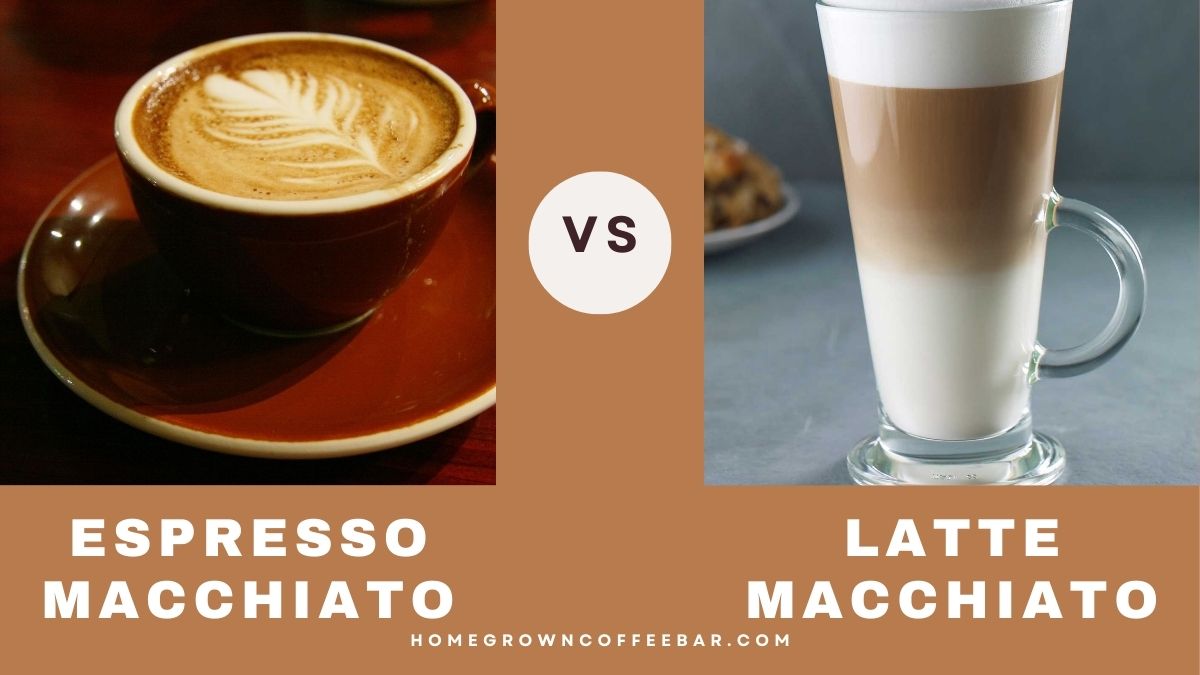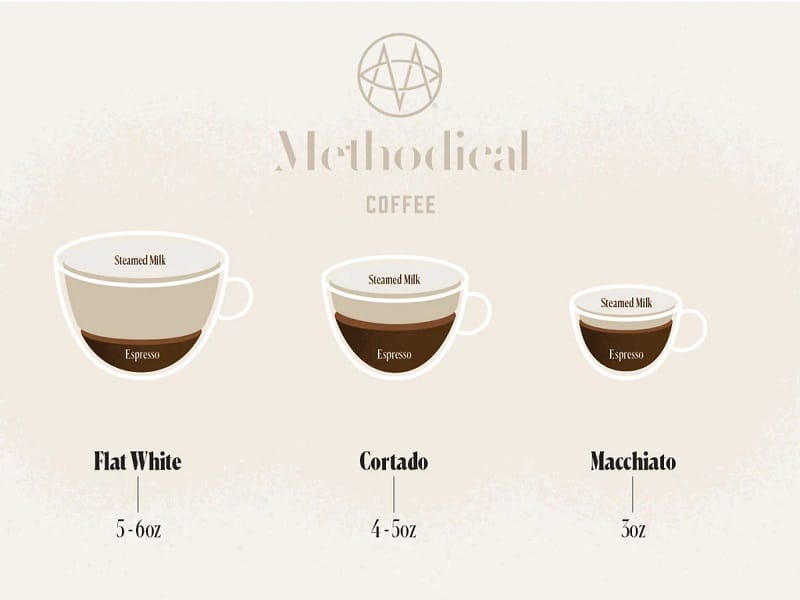The debate between Espresso Macchiato and Latte Macchiato is strong in the world of coffee. These two popular espresso-based beverages may sound similar, but their differences lie in the balance of espresso and milk. Understanding the distinctions between Espresso Macchiato vs Latte Macchiato is essential for coffee enthusiasts seeking the perfect ratio of coffee intensity and creaminess in their daily cup.
What Are The Key Differences Between Espresso Macchiato and Latte Macchiato
Milk Ratio
In Espresso Macchiato, the milk ratio is minimal compared to the espresso. It is predominantly espresso with just a small amount of steamed milk and foam. This results in a strong and intense coffee flavor, with the milk serving to “stain” the espresso rather than overpowering it.
On the other hand, Latte Macchiato has a higher milk ratio. It is predominantly steamed milk with just a small amount of espresso and a layer of microfoam. The milk is the show’s star in this drink, providing a creamy, velvety texture and mellow sweetness. The espresso adds a touch of richness and depth without overpowering the milk.
Size
Source: methodicalcoffee.com
Espresso Macchiato is smaller in size than Latte Macchiato. The espresso cup used for serving an Espresso Macchiato is typically around 2 to 2.5 fluid ounces (60-75ml). This smaller size allows for a more concentrated and intense coffee experience, as the espresso is the show’s star. The smaller volume also emphasizes the strong and bold flavors of the espresso, making it a favorite among those who enjoy a strong coffee taste.
On the other hand, the Latte Macchiato is larger. It is typically served in a taller glass or cup, with a volume ranging from 8 to 12 fluid ounces (240-350ml). The larger size allows for a higher milk ratio, making it a more indulgent beverage. The additional milk creates a creamier and smoother texture, producing a milder coffee taste. This makes Latte Macchiato popular for those who prefer a more balanced and mellow flavor profile.
Strength
Espresso Macchiato is known for its intense and strong coffee flavor. With a higher proportion of espresso to milk, the espresso shines through and delivers a bold and bitter taste. This concentrated strength is favored by coffee enthusiasts who enjoy a robust and full-bodied coffee experience.
On the other hand, Latte Macchiato offers a milder coffee taste. The more steamed milk and foam in the beverage, the creamier and more balanced the flavor profile. The milk softens the intensity of the espresso, resulting in a smoother and sweeter taste. This makes Latte Macchiato popular for those who prefer a gentler coffee flavor.
Texture
The texture of a latte is creamy and velvety, thanks to the steamed milk and milk foam. The smooth and thick consistency of the milk creates a luxurious mouthfeel, adding a layer of indulgence to the drink. The milk foam on top adds a delicate and foamy texture, enhancing the overall experience.
On the other hand, espresso macchiatos have a different texture. With a higher proportion of espresso to milk, macchiatos have a bolder and stronger coffee flavor. The small amount of milk foam adds a touch of creaminess, but the texture is lighter and less velvety than a latte.
Serving
Serving is another key difference between espresso macchiato and latte macchiato. Espresso macchiatos are traditionally served in smaller espresso cups, typically holding around 2-3 ounces of liquid. The smaller serving size of espresso macchiatos is intended to highlight the bold flavors of the espresso.
On the other hand, latte macchiatos are served in larger cups, usually holding around 8-12 ounces of liquid. The larger serving size of latte macchiatos allows for more steamed milk, creating a more indulgent and creamy experience.
When ordering at a cafe, it’s important to specify whether you prefer a smaller, bolder espresso macchiato or a larger, milkier latte macchiato to ensure you receive your preferred serving size.
About Espresso Macchiato
Espresso Macchiato is a popular coffee beverage known for its bold and intense flavor. Originating in Italy, it is made by adding a small amount of steamed milk and foam to a shot of espresso. The word “macchiato” means “stained” or “marked” in Italian, referring to the way the espresso is marked or stained with the milk.
Espresso Macchiato is characterized by its strong and concentrated taste, with a hint of sweetness. The texture is slightly creamy, creating a harmonious balance with the robust flavor of the espresso. This coffee drink is typically served in small espresso cups, allowing the rich flavors to be savored in every sip.
Espresso Macchiato is a favorite among espresso lovers who appreciate the boldness and complexity of this beverage. Its small serving size and strong taste make it perfect for those who prefer a quick yet robust coffee experience.
About Latte Macchiato
Latte Macchiato is a popular coffee beverage that originated in Italy. It is made by adding a large amount of steamed milk to a shot of espresso, creating distinctive layers of rich flavors. “latte” means milk in Italian, and “macchiato” means stained or marked, referring to how the espresso is marked with the milk.
The key feature of Latte Macchiato is its layered composition. Typically, the espresso is poured on top of the frothy steamed milk, creating a beautiful visual effect. A creamy, milky taste with a subtle sweetness characterizes the flavor of Latte Macchiato. The texture is smooth and velvety, providing a luxurious mouthfeel.
Latte Macchiato is enjoyed by coffee lovers who prefer a milder and more balanced flavor profile. Its larger serving size and smoother texture make it ideal for a comforting and indulgent coffee experience. Whether enjoyed in the morning or as an afternoon pick-me-up, Latte Macchiato is a delightful treat for coffee enthusiasts.



